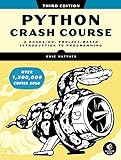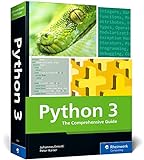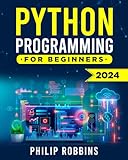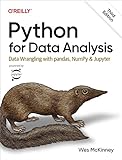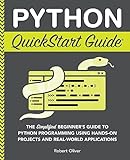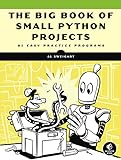To replace a subset of strings from a pandas DataFrame, you can use the .str.replace() method. This method allows you to specify the substring you want to replace and the new substring you want to replace it with. For example, you can use the following code to replace all occurrences of the substring "old_value" with "new_value" in a column named "column_name":
1
|
df['column_name'] = df['column_name'].str.replace('old_value', 'new_value')
|
This will replace all occurrences of "old_value" with "new_value" in the specified column. You can also use regular expressions to perform more complex string replacements.
What is the impact of encoding on replacing subset of string from pandas?
When encoding is used to replace a subset of strings from a pandas DataFrame, it can have a significant impact on the data. However, it is important to ensure that the encoding is done accurately and does not result in any unintended changes to the data.
Some potential impacts of encoding on replacing a subset of strings from a pandas DataFrame include:
- Changing the format of the data: Depending on the encoding used, the format of the data may change. For example, if characters are encoded using a different character set, the appearance of the string may change.
- Loss of information: In some cases, certain characters or symbols may not be properly encoded, resulting in a loss of information.
- Error or corruption in the data: If the encoding is not done correctly, it can lead to errors or corruption in the data, making it difficult to interpret or analyze.
- Inconsistencies in the data: Encoding may result in inconsistencies in the data, such as different formats or representations of the same string.
Overall, while encoding can be a useful tool for replacing a subset of strings in pandas, it is important to carefully consider the potential impacts and ensure that the encoding is done accurately to avoid any unintended consequences on the data.
What is the impact of using string methods vs vectorized string methods in pandas for replacing subset of string?
Using string methods in pandas for replacing subsets of strings can be less efficient compared to vectorized string methods.
When using string methods, each operation is applied element-wise which can be slower when dealing with large datasets. This is because the operation is applied individually to each element in the Series, resulting in more computational time.
On the other hand, vectorized string methods apply the operation to the entire Series at once, and are optimized for performance. This means that vectorized string methods can be much faster when replacing subsets of strings in pandas.
Therefore, it is recommended to use vectorized string methods when possible to improve the efficiency of the code and reduce computational time.
How to efficiently handle memory usage while replacing subset of string from pandas?
One way to efficiently handle memory usage while replacing a subset of string in a pandas DataFrame is to use the replace method with regex=True option. This method allows for the replacement of substring in a column efficiently without creating a copy of the data.
Here is an example:
1 2 3 4 5 6 7 8 9 10 |
import pandas as pd # create a sample pandas DataFrame data = {'A': ['apple', 'banana', 'cherry', 'date']} df = pd.DataFrame(data) # replace substring 'an' with 'XX' in column 'A' df['A'] = df['A'].str.replace('an', 'XX', regex=True) print(df) |
This will output:
1 2 3 4 5 |
A 0 apple 1 bXXana 2 cherry 3 dXXe |
By using the replace method with regex=True option, you can efficiently handle memory usage while replacing a subset of string in a pandas DataFrame. This is especially useful when working with large datasets where memory usage is a concern.
How to maintain the original index while replacing subset of string from pandas?
To maintain the original index while replacing a subset of a string in a Pandas DataFrame, you can use the following steps:
- Create a new column in the DataFrame with the updated string values.
1 2 3 4 5 6 7 8 9 10 11 |
import pandas as pd # create a sample DataFrame data = {'text': ['Hello World', 'This is a test', 'Python is awesome']} df = pd.DataFrame(data) # define the substring to replace substring = ' is ' # create a new column with the updated string values df['updated_text'] = df['text'].str.replace(substring, ' was ') |
- If you need to update the original column, you can use the following code:
1 2 |
# update the original column with the updated values df['text'] = df['text'].str.replace(substring, ' was ') |
By following these steps, you can maintain the original index while replacing a subset of a string in a Pandas DataFrame.
How to create a mapping dictionary for replacing subset of string from pandas?
To create a mapping dictionary for replacing a subset of strings within a pandas DataFrame, you can use the replace() method. Here's an example of how you can create a mapping dictionary and replace a subset of strings within a pandas DataFrame:
1 2 3 4 5 6 7 8 9 10 11 12 13 |
import pandas as pd # Create a sample DataFrame data = {'col1': ['apple', 'banana', 'orange', 'grape']} df = pd.DataFrame(data) # Create a mapping dictionary mapping_dict = {'apple': 'fruit', 'banana': 'fruit', 'orange': 'fruit'} # Replace subset of strings using the mapping dictionary df['col1'] = df['col1'].replace(mapping_dict) print(df) |
In this example, the mapping dictionary is created with the keys representing the strings to be replaced and the values representing the strings to replace them with. The replace() method is then used on the specified column of the DataFrame to replace the subset of strings based on the mapping dictionary.
After running this code, the output will be:
1 2 3 4 5 |
col1 0 fruit 1 fruit 2 fruit 3 grape |


